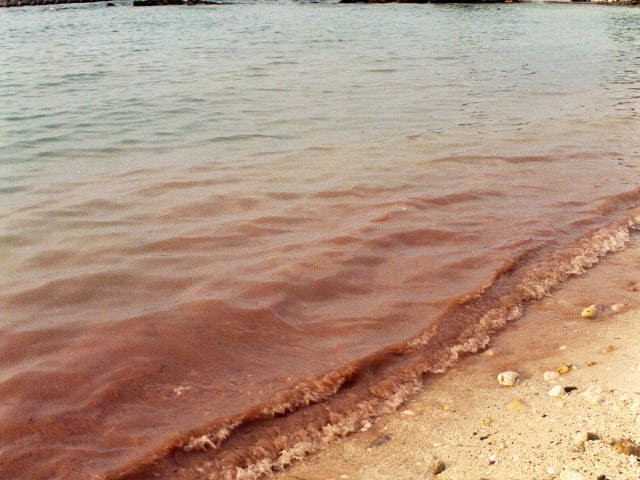 |
| Tiny orange coral eggs dot the surface of the water |
If you’re a frequent visitor to our blog, you’ll know that corals are made up of hundreds of tiny animals we call polyps. These animals employ tiny algal cells to provide energy for them through photosynthesis, and they use this energy to secrete a calcium carbonate skeleton. The animals are all connected and can share energy- so we call them coral colonies.
 |
| The water lapping the beach appeared to be pinky brown- this is a mass of coral eggs! |
Whilst these animals can reproduce asexually through fragmentation and budding (where the new polyps are genetic clones of the originals), they also possess the ability to sexually reproduce (where completely new genetic material is made). Each colony is a single sex: hundreds of males or hundreds of females. Because most corals are sessile organisms (fixed in one place and immobile), most employ a tactic called broadcast spawning, whereby eggs and sperm are released into the water column and mixed by natural currents. Female polyps produce egg bundles, and males eject sperm clouds into the water. Induced by a mixture of temperature, tidal movements and the lunar cycle, this is an event which occurs simultaneously throughout the reef, meaning every colony will spawn at the same time!
Last week, a guest discovered that the water close to the beach on the Eastern side of our island was a pinky brown colour and after taking one look at the moon, we decided the coral must have spawned! As all the corals spawn at the same time on the same night, they create spawning slicks on the water’s surface, which can be so large, they’re visible from planes!
| Sadly, we did not see any spawning, but we did spot this Banded Snake Eel!! |
Sometimes, this amazing coral spawning event can go on for a couple of nights, and as coral spawning is on the bucket list of every Marine Biologist, I grabbed a torch and my snorkeling gear the following evening and went for a night snorkel. Whilst we didn’t manage to see any more spawning, we did see a banded snake eel and a beautiful nudibranch!